 
Preserved Trucks of Recology:
Sunset Scavenger and Golden Gate Disposal
San Francisco, California
Courtesy of Ken Stewart, with annotation by Micah Gibson
HORSE-DRAWN WAGON (CIRCA 1900)
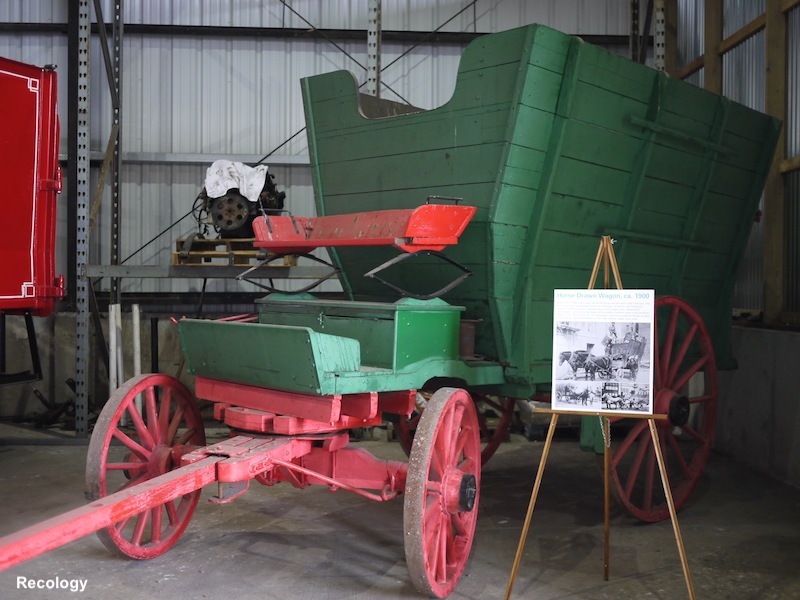
Beginning in 1896 when open refuse dumping was banned in San Francisco, the business of hauling garbage became a necessary service for San Francisco
residents and businesses. Garbage service first began with independent
"scavengers" who hauled garbage and recyclable materials away in horse-drawn
wagons, such as this vehicle. The scavengers carefully sorted the refuse to save
anything that might be saleable such as rags, bottles, paper, and metal.
1923 WHITE
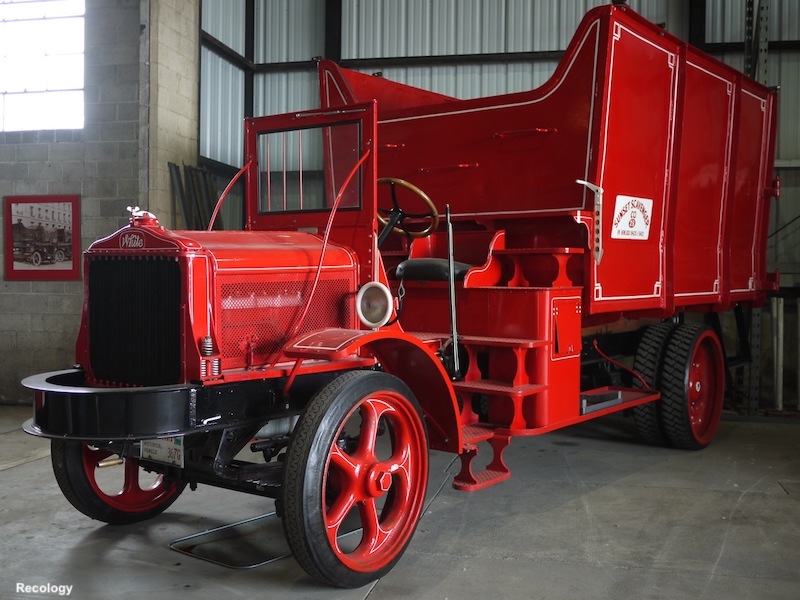
In 1916, a number of independent refuse collectors came together to form what
is today Recology Sunset Scavenger. They benefited from this collective by
pooling their equipment and resources. The venture was formalized by
incorporation in 1920. Another group of collectors also joined forces and
established the Scavenger's Protective Association. This group was incorporated
in 1921 and today is known as Recology Golden Gate Disposal.
This 1923 truck was used by Sunset Scavenger in San Francisco and took the
place of the horse-drawn wagon. It picked up garbage in residential areas and
was used until the early 1940s.
1929 FORD MODEL A
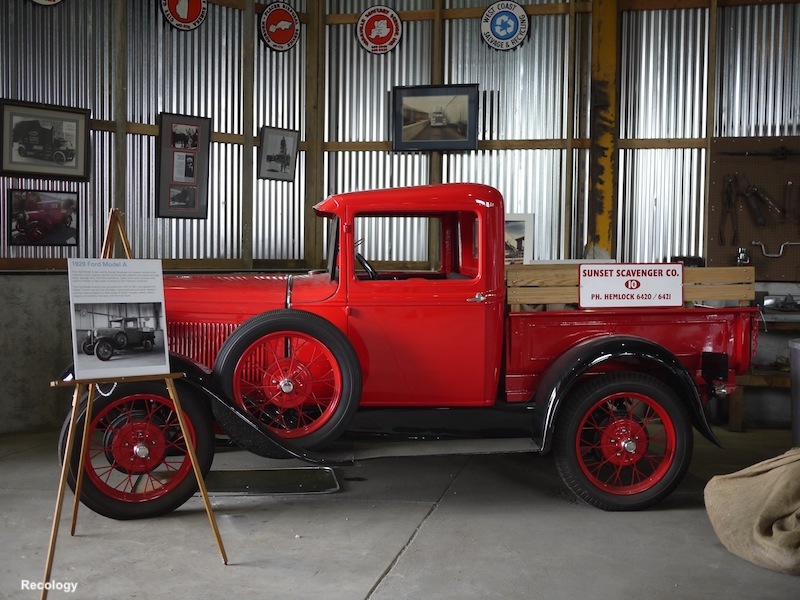
This 1929 Model A was used by Sunset Scavenger as a support vehicle to the
collection trucks. Support vehicles would provide collectors with additional burlap
sacks, garbage cans, and other assistance. Today, route trucks continue to be
used to maintain a high quality of service to San Francisco customers.
The Ford Model A series was produced from 1927 to 1931, and replaced the
Model T, which was the first affordable, mass-produced automobile. Model A
vehicles were available in a wide variety of styles; coupes, sedans, station
wagons, convertibles, taxi cabs, and this truck style.
1941 CHEVROLET
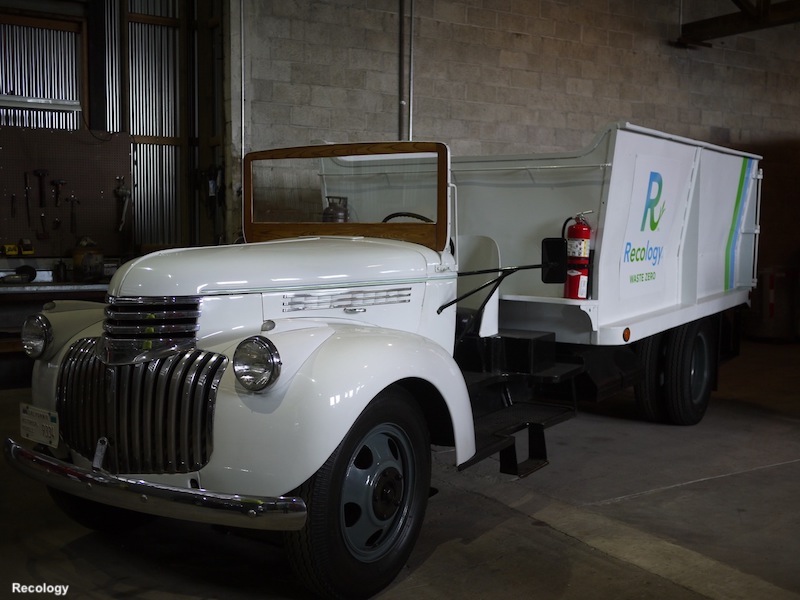
Used in the 1940s and 1950s for refuse collection in the Vacaville area, this 1941
Chevrolet truck has a custom built chassis. The dump box was modified by the
garbage company for collection use. Chevrolet introduced a new front end on its
vehicles in 1941 and trucks, such as this vehicle, became larger, with a wider
wheelbase and more power.
Today Recology continues to service the Vacaville area, which is also home to
one of Recology's composting facilities.
1948 WHITE
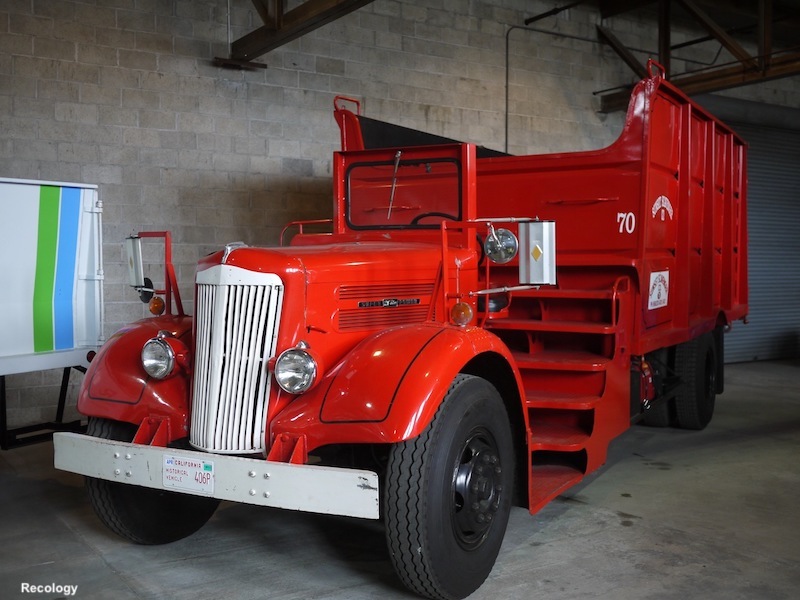
In service from 1948 to the mid 1960s, this truck was used by Sunset Scavenger
for refuse collection in San Francisco residential neighborhoods such as the
Sunset, Richmond, Mission and Potrero Hill. Today this truck can be seen driving
the routes of San Francisco's parades as part of Recology's parade contingent.
The White Motor Company initially produced both cars and trucks, but soon
began to exclusively make trucks. Following World War II, the company produced
only large trucks. This post-war era marked the peak of White truck popularity,
and vehicles were recognized for their quality.
1950 DeMARTINI
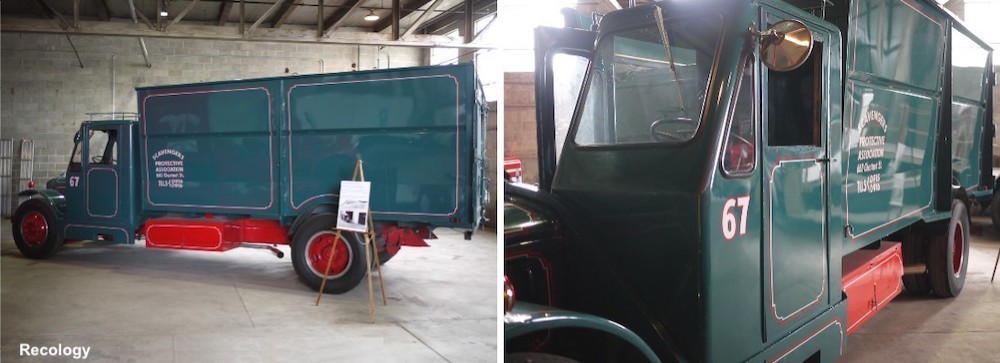
Trucks such as this 1950 DeMartini collected refuse in San Francisco from the
1940s to the 1960s. This vehicle was used by the Scavenger's Protective
Association for routes in the Financial District, Marina District, and Fisherman's
Wharf area.
Trucks were staffed by three workers. One collector and the driver would carry
cans on their backs, often up steep stairs, while another worker would stay on
the truck bed, sorting materials for recycling.
1951 DeMARTINI
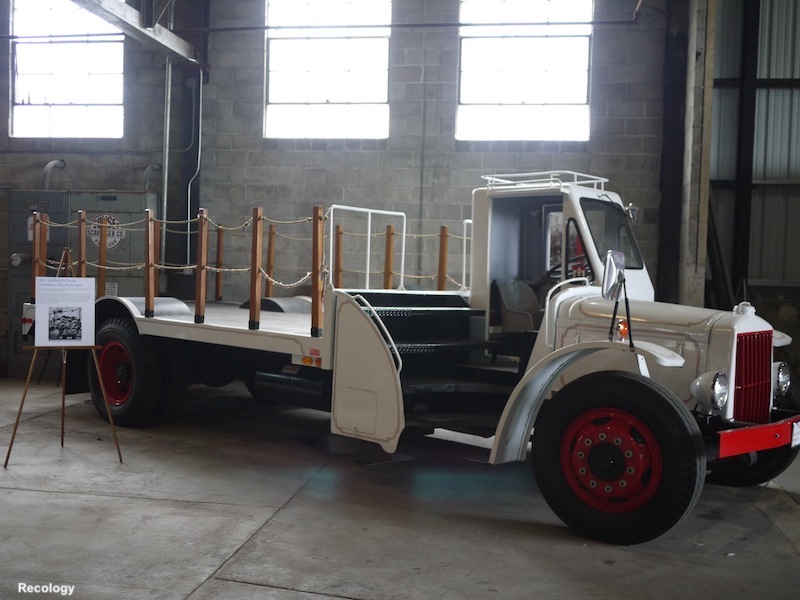
This 1951 DeMartini truck was used by West Coast Salvage until the 1970s to
collect paper and cardboard for recycling.
The DeMartini Truck Company was founded in San Francisco in 1919. Its office
and manufacturing facility were located at 457 Pacific Street. Owner George J.
DeMartini saw the potential in building specialized trucks for local government
services, such as garbage collection. The company made trucks at its plant in
San Francisco until 1955, and Mr. DeMartini continued to supply parts for
garbage trucks into the 1970s.
1969 PETERBILT
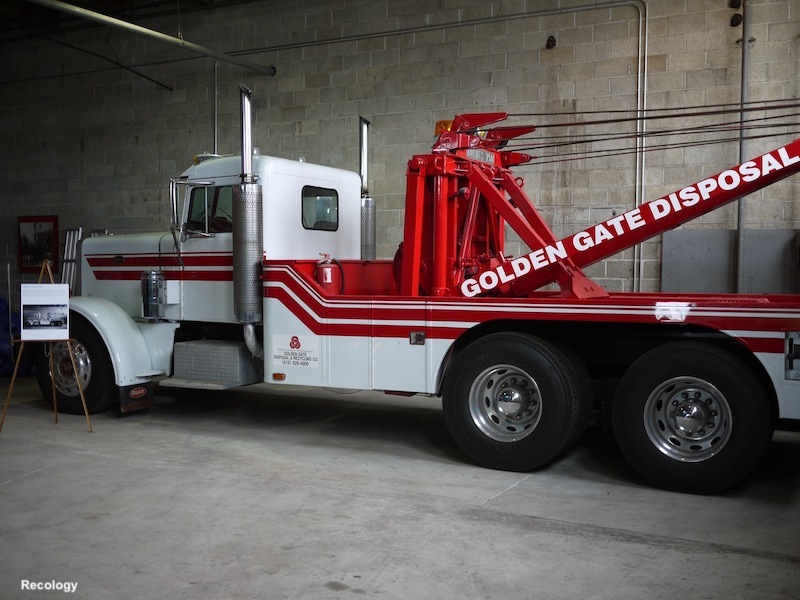
In the mid-1960s new technology enabled collection trucks to have compaction
capabilities, and open bed trucks were phased out in favor of these new rear-loading vehicles. Larger and heavier, the rear loaders required special towing and
maintenance. This 1969 Peterbilt was specially built with a Holmes wrecker and
was used until the late 1980s to tow and service rear loader collection trucks.

4/8/12
Photos courtesy of Ken Stewart/Recology
Logos shown are the trademarks of respective manufacturers
|
| |